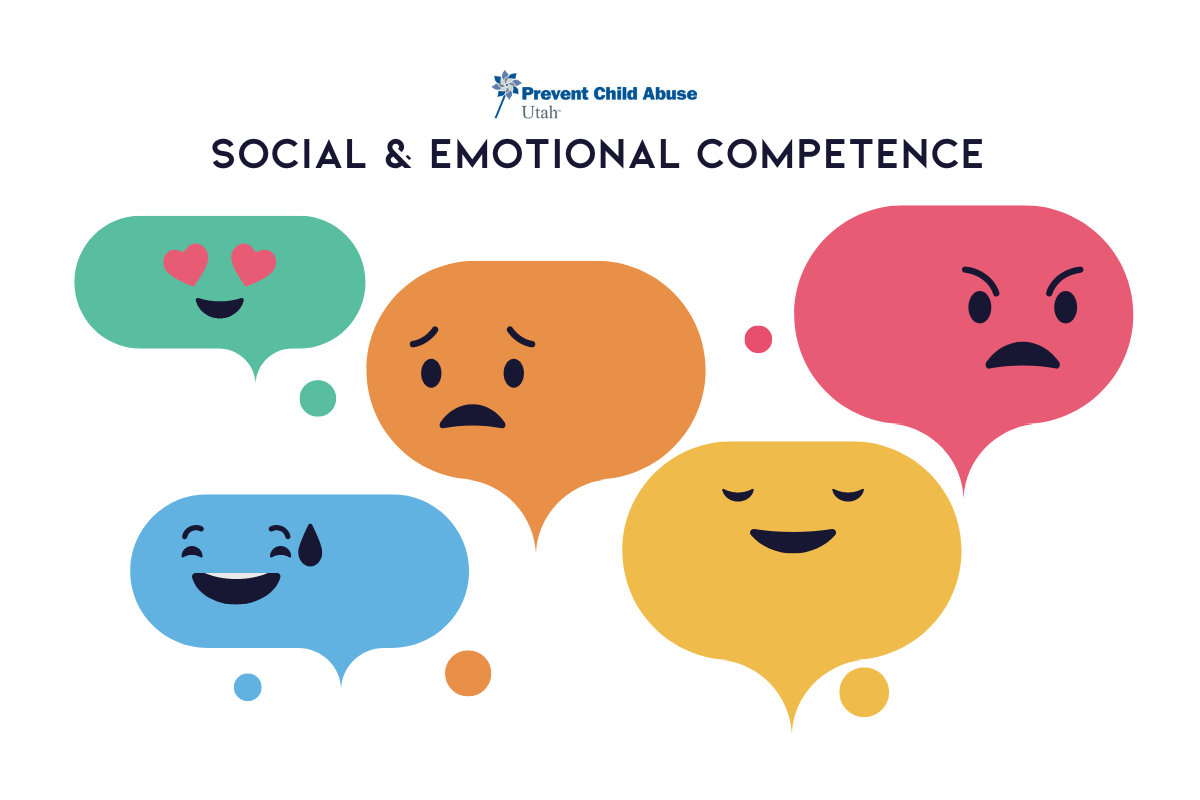
Social and emotional competence are important skills to teach children. As always children do what they see. Read more to learn how you can model social and emotional competence for your kids.
Understanding Your Own Emotions
Spring has sprung and so have all the spring and summer activities. This means countless car rides to and from school, sporting events, and extra curricular activities. You know the car rides. Those car rides. The ones where kids are tired and hot after running around at their soccer game. They’re hungry and begging for McDonald’s the whole ride home. The baby is crying because you are running late on nap time, and to top it all off, your teen is blasting their music so loud through their headphones that it might as well be playing on speaker.
Then you feel it. The overstimulation is taking over. The anxiety starts to build and the urge to scream becomes so strong you grit your teeth. You remember the breathing techniques your meditation apps taught you. Breathe. In through the nose. Out through the mouth. Repeat.
Days like this are normal and inevitable. The power you hold in getting to know your emotions can have a great impact on the children who are watching you. Children model our emotions. Like the time your toddler repeated an expletive they heard you say when you stubbed your toe. Describing your emotions in real time with a broad vocabulary can help children to identify their own emotions.
Describing Emotions
The more context and examples they have to express their emotions, the better children can communicate what they need. Children with a strong emotional vocabulary:
- Tolerate frustration better
- Get into fewer fights
- Engage in less destructive behavior
- Are healthier
- Are less lonely
- Are less impulsive
- Are more focused
- Have greater academic achievement
So a child comes to you with big emotions. Now what?
This quote is a great reminder of what you can do in real time:
Regulate. Then relate. Then Reason.”
Dr. Bruce Perry
Regulate First – respond in a sensory manner rather than a manner first. Adjust the tone, volume, and cadence of your voice. Get on their level. Pay attention to proximity, body language, and breathing to a level that will present as calm and safe to them. This way they will respond in a calm and sage manner.
After you regulate them, Relate second. You can start with validating their emotions and offer to help regulate them if they need assistance, “it looks like you are feeling angry. Would it be helpful if we….” and follow up with options that usually help that child to calm down. Allow for choice and control when possible so they feel in charge.
Remember that reasoning cannot be successful until the child is regulated again. You cannot engage in cause and effect approaches until they are calm. Once your child is regulated, you can reason with them by offering solutions for the problem.
Keep Practicing
It is hard work to name your emotions and practice regulating, relating and reasoning yourself. And it’s just as hard to remember to practice these steps with your kiddos. It takes practice and patience and you’ll definitely make a few mistakes along the way. But even if you do remember this:
“It is better to err and repair, then not to err at all.”
Dr. Laura Markham
When we can admit that we may have overreacted, we are modeling healthy behavior for the children in our lives. So remember in those stressful car rides or tantrums or big emotions: Regulate. Relate. Reason. You got this.
Check out a poster below to help children understand and identify their emotions!
